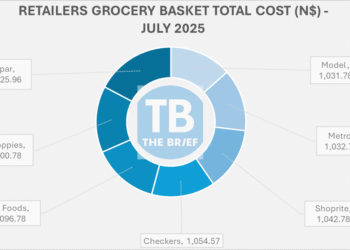
Over the weekend Zambia experienced a national blackout due to a loss of “significant generation” to the country’s power system. This however had a knock-on effect on South Africa’s own power supply challenges, eventually leading to the implementation of Stage 4 load shedding for most of this week.Â
According to a statement issued on Saturday by Zambian power utility – Zesco Limited – their system experienced a “disturbance”, following the loss of generation capacity, the cause of which is still being investigated.
“Preliminary investigations indicate that the cause of the disturbance was external to the Zambian interconnected power system,” the statement issued by Hazel Zulu, Zesco’s public relations manager read.
Zesco has not yet responded to questions from Fin24 on updates of the investigations.
On Saturday, Eskom also issued a statement citing the “major incident” in Zambia, which affected the entire Southern African Power Pool (SAPP).
The SAPP was established in August 1995 at the Southern African Development Community (SADC) summit held in Kempton Park, South Africa. Member nations and their power utilities, apart from Mauritius, signed a Memorandum of Understanding to form an electricity power pool for the region.
According to its website, the SAPP seeks to be a fully integrated, competitive energy market that provides sustainable energy solutions and services for the SADC region.
According to Eskom, the incident in Zambia affected power imported from Cahora Bassa hydroelectric scheme which is located in Mozambique.Â
The Cahora Bassa project was first initiated in 1969, according to Eskom’s website. Portugal and South Africa signed contracts to finalise plans for the construction of the scheme – which includes a hydroelectric generating station at the dam and a  over 1400 km high-voltage direct current transmission system transporting electricity to South Africa’s converter station Apollo near Pretoria.
At the time, the view was that the scheme would reduce the need to build more coal fired power stations in South Africa, and this would free up water supplies that otherwise would have been used at the stations.
Eskom’s power network is also linked to Lesotho, Botswana, Swaziland, Namibia and Mozambique. The energy imported from Cahora Bassa can be distributed to any point of the network, information on Eskom website showed.
But why would an incident in Zambia, the Cahora Bassa transmission and South Africa’s load shedding?
According to Eskom, the SAPP is an interconnected system. “Whatever goes into the system will impact the flow within the system overall,” Eskom said in response to questions from Fin24.
Information to Chris Yelland of EE Business Intelligence from the Eskom System Operator, indicated that subsequent to the loss of generation capacity in Zambia, the frequency of the power system dropped to 49.31 Hertz (Hz).
The system operator targets a frequency band of between 49.5 Hz and 50.5 Hz. According to Tobias Bischof-Niemz and Terence Creamer, a frequency of 50 Hz indicates energy generation matches demand. Usually generation output is adjusted to meet demand. But when there is not enough generation, customer demand must be adjusted and that is why load shedding is introduced, they explain. This ensures the power system remains stable.
When the frequency dropped – it caused a loss of 1 000 MW from Cahora Bassa, Eskom said. It also tripped a unit at Tutuka, Yelland was informed.
Eskom in turn had to stabilise its system using its emergency reserves – pump storage and open cycle gas turbines. Eskom managed to run these sources for two hours until the Cahorra Bassa supply was restored.-fin24











